Auto-GPT: Streamlining AI Automation with GPT-4 and Task-Based Programming
Looking to streamline your AI automation processes? Look no further than Auto-GPT! Our cutting-edge platform combines the power of GPT-4 with task-based programming, allowing for faster and more effic
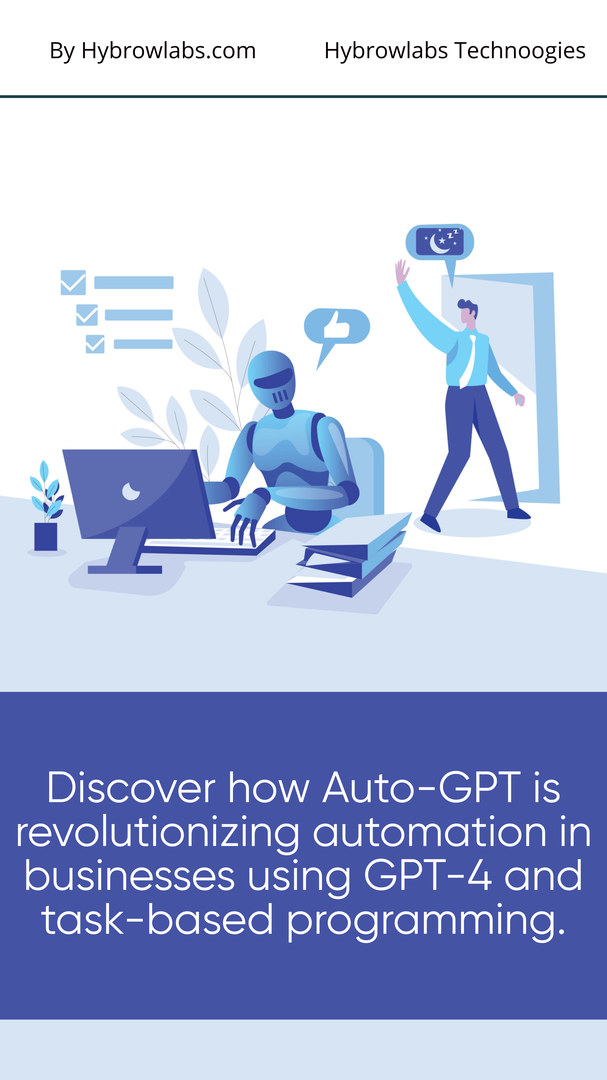
Businesses in the modern digital era are continuously looking for ways to automate their processes in order to remain competitive.Many businesses now depend on automation to boost productivity and cut expenses. The development of AI has made task automation simpler and more efficient. The most recent innovation in the field of AI, GPT-4, promises to advance automation. The Auto-GPT framework streamlines AI automation by utilising the capabilities of GPT-4 and task-based programming. In this post, we'll examine the attributes of Auto-GPT as well as its requirements, setup procedure, and application.
What is Auto-GPT?
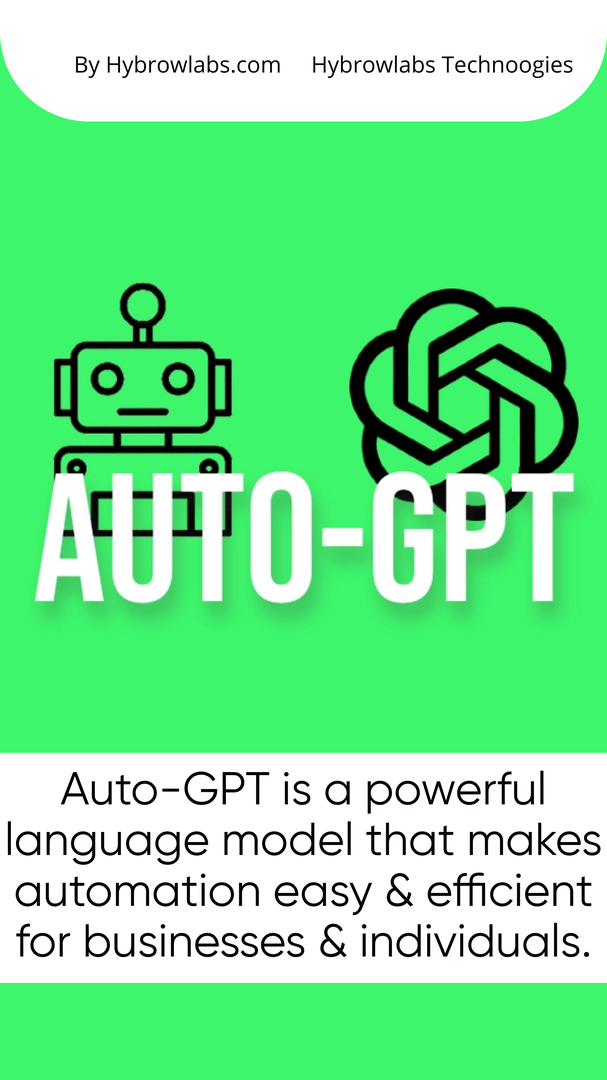
Auto-GPT is a language model that uses GPT-4 technology and task-based programming to automate various tasks. It is intended to make automation simpler, quicker, and more efficient so that both businesses and individuals may use it to easily produce content, respond to inquiries, and carry out other operations. Healthcare, banking, and manufacturing are just a few of the sectors that can adopt auto-GPT. Users can automate processes like data analysis, language translation, and image identification with Auto-GPT. It is a efficient tool that businesses may use to raise productivity, cut costs, and improve efficiency.
What is Task-Based Programming and How Can It Help in AI Automation?
Task-based programming is an approach to software development that involves breaking down a complex task into smaller, more manageable sub-tasks, each of which can be completed independently. This strategy can increase software development's effectiveness, adaptability, and scalability.
The core of Auto-GPT is task-based programming. Businesses can use it to specify which specific tasks should be automated and how they should be carried out. This implies that companies might develop unique solutions that are customized to their own requirements. Additionally, task-based programming guarantees that Auto-GPT can carry out tasks with great accuracy, lowering the possibility of mistakes. Businesses can improve productivity and streamline their operations by employing task-based programming.
For instance, a retailer can automate the process of writing product descriptions, giving their staff more time to work on other crucial activities like customer support. This increases overall productivity and profitability while also saving time and resources.
Incredible Features of Auto-GPT:

Auto-GPT comes with a range of features that make it a powerful tool for automating tasks. Some of its key features include:
- Natural language processing: Auto-GPT can understand and process natural language, making it easy to communicate with.
- Task-based programming: Auto-GPT uses task-based programming to automate tasks. This makes it easy to set up and customize.
- Speech mode: Auto-GPT has a speech mode that allows users to interact with it using voice commands.
- Memory: Auto-GPT has long-term and short-term memory, allowing it to learn and improve over time.
Upgrade Your AI Automation with Auto-GPT: Here are the Must-Have Requirements!
To use Auto-GPT, users will need a computer with the following specifications:
- Intel Core i5 processor or higher
- 8GB RAM or higher
- Windows 10 operating system or higher
- Python 3.7 or higher
Now, lets's install Auto-GPT: A quick and easy installation guide!
To install Auto-GPT, users will need to follow these steps:
- Install Python 3.7 or higher.
- Install the latest version of pip.
- Install the required dependencies using pip.
- Download and install the Auto-GPT package.
- Configure the settings as per your requirements.
Ready to Transform Your AI Automation? Here's How to Use Auto-GPT
- To use Auto-GPT, simply input your desired topic or task, and let the tool do the rest. Auto-GPT will analyze your input and generate creative and attractive content that captures the essence of your topic in a way that is both informative and entertaining.
- Whether you need to create engaging social media posts, informative blog articles, or interactive quizzes and surveys, Auto-GPT can help you achieve your goals quickly and easily. With its advanced AI technology, it can generate content that is tailored to your specific needs and audience, making it a valuable asset for any content creator or marketer.
- The speech mode in Auto-GPT allows for the conversion of text to speech, making it easier to interact with the program. With this feature, users can communicate with the AI assistant, giving voice commands and receiving voice feedback.
Understanding Memory in Auto-GPT:
Auto-GPT, like any other AI system, needs memory to function effectively. The memory in Auto-GPT can be categorized into two types: long-term memory and short-term memory.
1. Short-term memory:
It refers to the temporary storage of information that is needed for immediate processing. This type of memory is also referred to as working memory.
2. Long-term memory:
It refers to the permanent storage of information that is needed for future reference. It is also referred to as semantic memory.
The combination of short-term and long-term memory is essential for Auto-GPT to function effectively. Short-term memory helps Auto-GPT to process information quickly, while long-term memory helps it to learn and improve over time. The system can retrieve information from its long-term memory to respond to similar requests in the future, reducing the processing time and improving efficiency.
What Tools Power Auto-GPT?
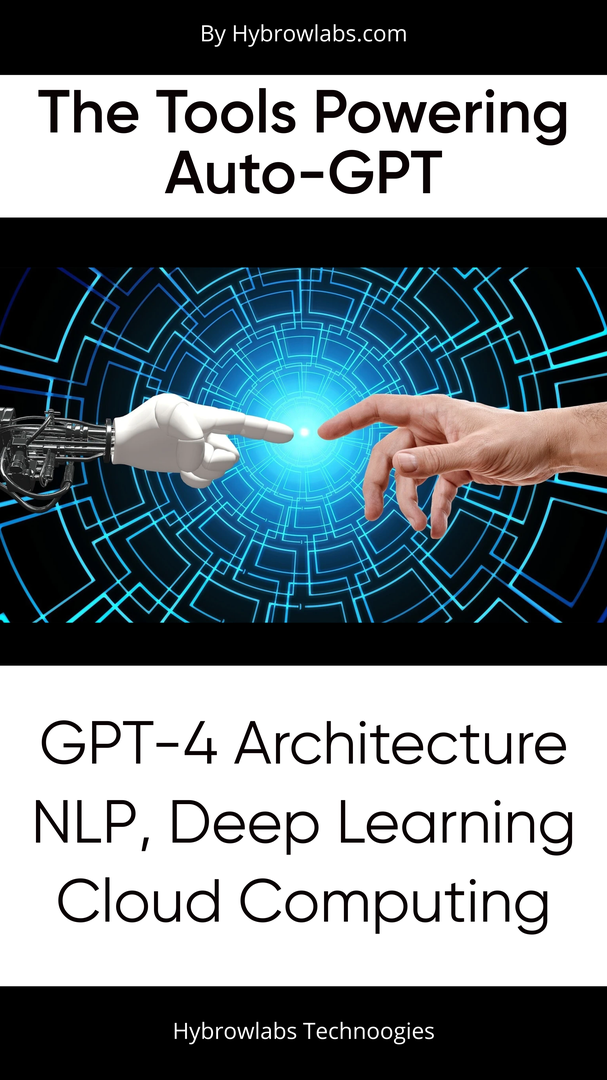
To achieve its full potential, Auto-GPT relies on several tools and technologies to perform its functions effectively. Here are some of the essential tools used in Auto-GPT:
1. GPT-4 Architecture:
Auto-GPT is built on the GPT-4 architecture, which is the latest version of the Generative Pre-trained Transformer (GPT) series. This architecture is designed to handle large amounts of data and process it quickly, making it ideal for complex automation tasks.
2. Natural Language Processing (NLP):
Auto-GPT uses NLP to understand and interpret human language. This technology enables the system to analyze and process text data, identify patterns and relationships, and generate responses in natural language.
3. Deep Learning:
Auto-GPT relies on deep learning algorithms to learn and improve over time. These algorithms enable the system to recognize patterns, make predictions, and adjust its behavior based on feedback.
4. Cloud Computing:
Auto-GPT uses cloud computing to store and process data. This technology allows the system to access vast amounts of data quickly and efficiently, improving its performance and accuracy.
5. APIs:
Auto-GPT relies on application programming interfaces (APIs) to communicate with other systems and tools. APIs allow the system to integrate with different platforms and access data from multiple sources, making it more versatile and adaptable.
How to Automate Task-Based AI with GPT-4?
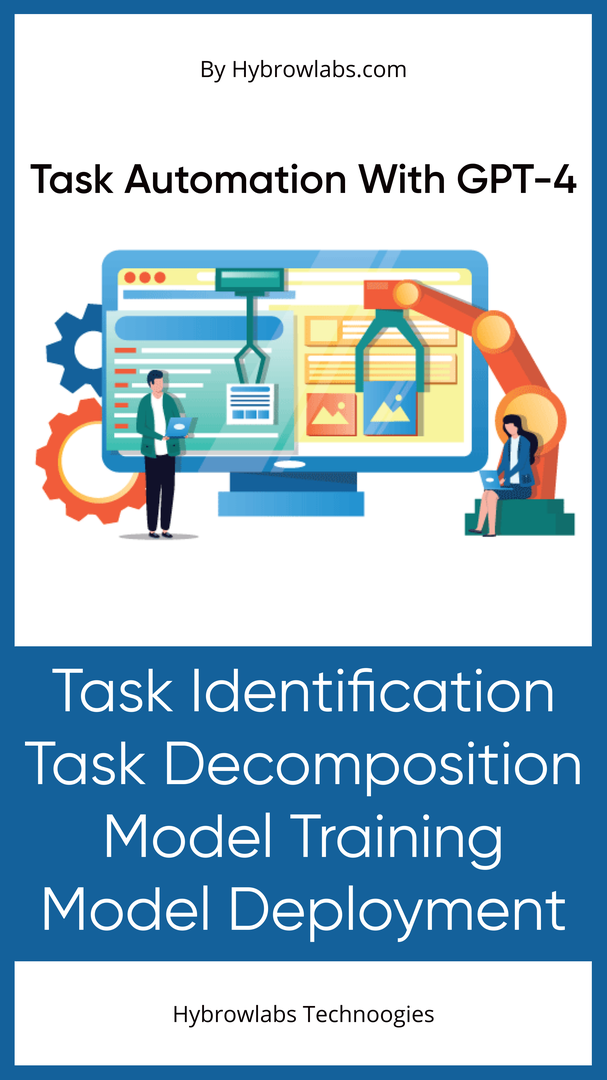
Automating task-based AI with GPT-4 is a powerful way to streamline business operations and improve efficiency. Here are the steps involved in automating task-based AI with GPT-4 using Auto-GPT:
1. Identify the task:
The first step in automating task-based AI with GPT-4 is to identify the task that needs to be automated. This could be anything from customer service inquiries to data entry tasks.
Let's say a business wants to automate their customer service inquiries. The first step would be to identify this task as something that can be automated using GPT-4.
2. Break down the task:
Once the task has been identified, the next step is to break it down into smaller, more manageable components such as identifying the customer's issue, finding a solution, and communicating it to the customer. This is where task-based programming comes into play. By breaking down the task into smaller components, it becomes easier to automate using GPT-4.
3. Train the model:
Once the task has been broken down into smaller components, the next step is to train the GPT-4 model. This involves feeding the model with large amounts of data related to the task. The model will learn from this data and be able to perform the task more accurately over time.
4. Test the model:
After the model has been trained, the next step is to test it. This involves running the model through a series of tests to ensure that it can perform the task accurately and efficiently.
5. Deploy the model:
Once the model has been tested and verified, it is ready to be deployed. This involves integrating the model into the business workflow and automating the task.
6. Monitor and refine:
Finally, it is important to monitor the performance of the model and refine it over time. This involves collecting feedback from users and making adjustments to the model to improve its performance. The company makes adjustments to improve its accuracy and efficiency, such as incorporating customer feedback to refine its processing methods.
By following these steps, businesses can automate a wide range of tasks and improve their productivity and efficiency.
Examples of Task-Based Automation with Auto-GPT:
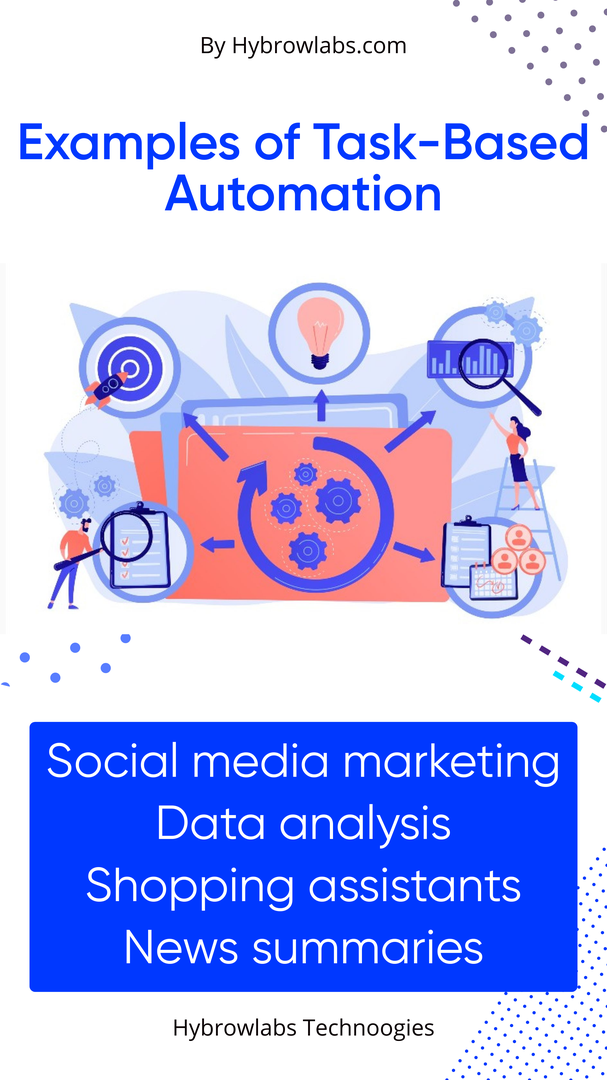
1. Social media marketing:
A company can use Auto-GPT to generate social media content, such as captions and hashtags. The model can analyze the company's brand voice and style guidelines and create content that is consistent with their brand image.
2. Data analysis:
Auto-GPT can be used to analyze large datasets and provide insights. For example, a company can train the model on sales data and use it to identify trends and patterns that can inform future business decisions.
3. Chatbots and Personal shopping assistants:
Auto-GPT can be used to create chatbots for customer service inquiries. The model can analyze customer inquiries and provide responses based on predefined scripts and templates.
Online retailers can use Auto-GPT to provide personalized shopping recommendations to customers. By analyzing a customer's browsing and purchase history, the model can recommend products that are relevant to their interests and preferences.
4. Content creation for e-commerce websites:
Auto-GPT can be used to generate product descriptions and reviews for e-commerce websites. For example, a clothing company can train the model on their product catalog and use it to generate unique product descriptions for each item.
5. Personalized news summaries:
News websites can use Auto-GPT to provide personalized news summaries to readers. By analyzing a user's reading history and preferences, the model can provide a summary of the most relevant news stories for that user.
Conclusion
In conclusion, Auto-GPT is a efficient tool that utilises the strengths of GPT-4 and task-based programming to automate a variety of operations. Auto-GPT can be used in a variety of industries, including healthcare, banking, and manufacturing, to improve efficiency, lower costs, and increase production. These capabilities include natural language processing, speech mode, long-term memory, and short-term memory. Auto-GPT is a priceless tool for content producers and marketers equally because to its cutting-edge AI technology, which enables the creation of customised content to meet particular demands and audiences. By utilizing the framework provided by Hybrowlabs Development Services, businesses can streamline their processes, freeing up employees' time and enabling them to concentrate on more critical tasks.
FAQ’s
1. What advantages does using Auto-GPT offer?
By saving time and resources, lowering development expenses, and doing away with the requirement for specialised programming skills, Auto-GPT makes it possible to construct AI systems more quickly and effectively.
2. What are a few difficulties with using Auto-GPT?
The necessity for high-quality input data, the restrictions on the generated code, and the potential for mistakes or inaccuracies in the generated code are some of the difficulties associated with using Auto-GPT.
3. How do I begin using Auto-GPT?
You can investigate current tools and frameworks that use Auto-GPT technology to get started, or you can work with a development team to create unique solutions catered to your particular requirements.
No comments yet. Login to start a new discussion Start a new discussion